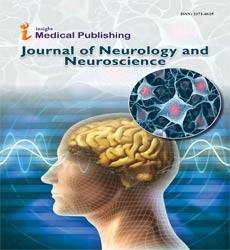Abstract
Diagnostic Yield of Sural Nerve Biopsy: Study from a Tertiary Care Referral Centre in India
Background: Peripheral neuropathies are a heterogeneous group of disorders with varying etiologies. A systematic approach is required for patient evaluation for cost effective diagnosis. Aims: Present study conducted at a tertiary care referral centre aimed to evaluate the clinical profile and usefulness of sural nerve biopsy.
Material and method: The study was conducted on 75 patients attending the neurology outpatient department/those admitted in the wards. All patients were subjected to a detailed clinical, neurological and necessary biochemical investigations. Those patients with an inconclusive result were subjected to a sural nerve biopsy with the results being interpreted as diagnostic, contributory or noncontributory.
Results: Out of the 75 patients enrolled 36 underwent nerve biopsy. Amongst those 18 turned out to have Hansen’s disease, 8 vasculiis, 2 CIDP, 1 diabetes and 7 patients remained undiagnosed. Overall in 15 cases the biopsy was diagnostic, in 14 cases it was contributory, while in 7 cases it was noncontributory. Nerve biopsy proved more beneficial in patients with a multiple mononeuropathy pattern (p<0.003). Overall in about 80% of patients nerve biopsy proved to be worthwhile
Conclusion: Nerve biopsy has a good diagnostic yield if done in properly selected cases. This is especially so for the asymmetrical neuropathies particularly infectious causes like leprosy and vasculitis.
Author(s):
SP Patidar, Deepika Joshi, Mishra VN, Chaurasia RN Ansari AZ and Niraj Kumar
Abstract | Full-Text | PDF
Share this

Abstracted/Indexed in
- Google Scholar
- Open J Gate
- Genamics JournalSeek
- The Global Impact Factor (GIF)
- China National Knowledge Infrastructure (CNKI)
- Directory of Research Journal Indexing (DRJI)
- WorldCat
- Proquest Summons
- Scientific Journal Impact Factor
- Secret Search Engine Labs
- Euro Pub
Open Access Journals
- Aquaculture & Veterinary Science
- Chemistry & Chemical Sciences
- Clinical Sciences
- Engineering
- General Science
- Genetics & Molecular Biology
- Health Care & Nursing
- Immunology & Microbiology
- Materials Science
- Mathematics & Physics
- Medical Sciences
- Neurology & Psychiatry
- Oncology & Cancer Science
- Pharmaceutical Sciences

